
2011

Štengl V., Popelková D., Vláčil P., TiO2-Graphene Nanocomposite as High Performance Photocatalysts, Journal of Physical Chemistry C, 115 (51), pp 25209–25218
Abstract: Nonstoicheiometric TiO2-Graphene nanocomposite was prepared by thermal hydrolysis of suspension graphene nanosheets and titania peroxo-complex. The characterization of graphene nanosheets was provided by using an atomic force microscope (AFM). The prepared samples were characterized by Brunauer–Emmett–Teller (BET) surface area and Barrett–Joiner–Halenda porosity (BJH), X-ray Diffraction (XRD), Infrared Spectroscopy (IR), Raman Spectroscopy (RS) and Transmission Electron Microscopy (TEM). UV/VIS diffuse reflectance spectroscopy was employed to estimate band-gap energies. From the titania/graphene samples, a 300 μm thin layer on glass desk 10x15 cm was created. The photocatalytic activity of the prepared layers was assessed from the kinetics of the photocatalytic degradation of butane in the gas phase. With regard to the degree of mineralization of butane then can be considered as the most active sample (labeled TiPC0100) containing 0.1g of graphene nano-sheets. link
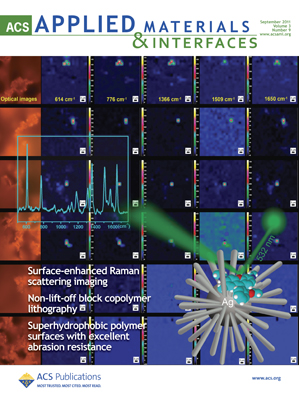
Štengl V., Velická J., Maříková M., Grygar T.M. New Generation Photocatalysts: How Tungsten Influences the Nanostructure and Photocatalytic Activity of TiO2 in the UV and Visible Regions, ACS Appl. Mater. Interfaces, 2011, 3 (10), pp 4014–4023
Abstract: Tungsten-doped anatase was prepared by a thermal hydrolysis of aqueous solutions of peroxo complexes of titanium and tungsten. The synthesized samples included X-ray diffraction, high-resolution transmission electron microscopy, selected area electron diffraction, Raman spectroscopy, specific surface area, and porosity determination. W doping resulted in a decrease of the unit-cell volume of anatase at lower W contents and an increase at higher W contents. The position of the most intense Raman band of the Eg mode (near 147 cm–1) also has a local minimum at medium-doped titania (1.1–3.6% W in titania). W doping increases the temperature of anatase-to-rutile transformation by about 100 °C compared with nondoped anatase. The photocatalytic activity of doped titania samples was determined by decomposition of Orange II dye during irradiation at 365 and 400 nm. Specimens with moderate W doping (1.0–3.3% W) perform best: they enhance the corresponding reaction rates 10 times at 365 nm and 5 times at 400 nm, respectively, compared with pure titania obtained under the same set of synthesis conditions. link
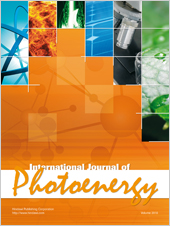
Štengl V., Grygar T.M., The simplest way to iodine-doped anatase for photocatalysts activated by visible light, International Journal of Photoenergy, Volume 2011 (2011), Article ID 685935, 13 pages, doi:10.1155/2011/685935
Abstract: Iodine doped TiO2 was prepared by thermal hydrolysis of aqueous solutions of the titanium peroxo-complex, includes no organic solvents or organometallic compounds. The synthesized samples were characterized by x-ray diffraction (XRD), Raman spectroscopy (RS), infrared spectroscopy (IR), specific surface area (BET) and porosity determination (BJH). The morphology and particle size was determined by high resolution transmission electron microscopy (HRTEM) and selected area electron diffraction (SAED). All prepared samples have a red-shifted band-gap transition, well crystalline anatase structure and porous particles with a 100-200 m2g-1 specific surface area. The photocatalytic activity of iodine doped titania samples was determined by decomposition of Orange II dye during irradiation at 365 nm and 400 nm. Iodine doping promotes the titania photocatalytic activity very efficiently under visible light irradiation. The titania sample with 0.32 wt. % I has the highest catalytic activity during the photocatalyzed degradation of Orange II dye in an aqueous suspension in the UV and visible regions. link

Štengl V., Popelková D., TiO2/ZnS/CdS Nanocomposite for Hydrogen Evolution and Orange II Dye Degradation, International Journal of Photoenergy, Volume 2011 (2011), Article ID 532578, 14 pp, doi:10.1155/2011/532578
Abstract: TiO2/ZnS/CdS composites for photocatalytic hydrogen production from water were prepared by homogeneous hydrolysis of aqueous solutions mixture of TiOSO4, ZnSO4 and CdSO4 with thioacetamide. Hydrogen evolution was observed in the presence of palladium and platinum nanoparticles deposited on TiO2/ZnS/CdS composites The morphology was obtained by scanning electron microscopy, the nitrogen adsorption-desorption was used for determination of surface area (BET) and porosity. The method of UV-VIS diffuse reflectance spectroscopy was employed to estimate band-gap energies of prepared TiO2/ZnS/CdS nano-composites. The photocatalytic activity of the prepared samples were assessed by photocatalytic decomposition of Orange II dye in an aqueous slurry under UV irradiation at 365 nm wavelength and visible light up to 400 nm wavelength. Doped titanium dioxide by the CdS increased band-gap energy and doping with ZnS increased photocatalytic activity. The best photocatalytic activity for H2 evolution shows sample named TiZnCd7 on surface deposited with palladium, which contains 20.21% TiO2, 78.5% ZnS and 1.29% CdS. link
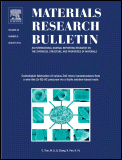
Štengl V., Bludská J., Opluštil F., Němec T., Mesoporous titanium-manganese dioxide for sulphur mustard and soman decontamination, Materials Research Bulletin, Volume 46, Issue 11, November 2011, Pages 2050–2056
Abstract: Titanium(IV)-manganese(IV) nano-dispersed oxides were prepared by a homogeneous hydrolysis of potassium permanganate and titanium(IV) oxo-sulphate with 2-chloroacetamide. Synthesised samples were characterised using Brunauer–Emmett–Teller (BET) surface area and Barrett–Joiner–Halenda porosity (BJH), X-ray diffraction (XRD), infrared spectroscopy (IR), and scanning electron microscopy (SEM). These oxides were taken for an experimental evaluation of their reactivity with sulphur mustard (HD or bis(2-chloroethyl)sulphide) and soman (GD or (3,3´- dimethylbutan-2-yl)-methylphosphonofluoridate). Mn4+ content affects the decontamination activity; with increasing Mn4+ content the activity increases for sulphur mustard and decreases for soman. The best decontamination activities for sulphur mustard and soman were observed for samples TiMn_37 with 18.6 wt.% Mn and TiMn_5 with 2.1 wt. % Mn, respectively. link
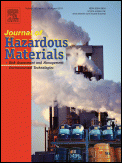
Štengl V., Grygar T.M., Opluštil F., Němec T., Sulphur mustard degradation on zirconium doped Ti-Fe oxides, Journal of Hazardous Materials, Volume: 192 Issue: 3 September 2011 Pages: 1491-1504
Abstract: Zirconium doped mixed nanodispersive oxides of Ti and Fe were prepared by homogeneous hydrolysis of sulphate salts with urea in aqueous solutions. Synthesized nanodispersive metal oxide hydroxides were characterized as the Brunauer–Emmett– Teller (BET) surface area and Barrett–Joiner–Halenda porosity (BJH), X-ray diffraction (XRD), infrared spectroscopy (IR), scanning electron microscopy (SEM) with energydispersive X-ray microanalysis (EDX), and acid-base titration. These oxides were taken for an experimental evaluation of their reactivity with sulphur mustard (chemical warfare agent HD or bis(2-chloroethyl)sulphide). The presence of Zr4+ dopant tends to increase both the surface area and the surface hydroxylation of the resulting doped oxides in such a manner that it can contribute to enabling the substrate adsorption at the oxide surface and thus accelerate the rate of degradation of warfare agents. The addition of Zr4+ to the hydrolysis of ferric sulphate with urea shifts the reaction route and promotes formation of goethite at the expense of ferrihydrite. We discovered that Zr4+ doped oxo-hydroxides of Ti and Fe exhibit a higher degradation activity towards sulphur mustard than any other yet reported reactive sorbents. The reaction rate constant of the slower parallel reaction of the most efficient reactive sorbents is increased with the increasing amount of surface base sites. link
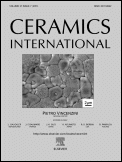 Ctibor P., Ageorges H., Štengl V., Murafa N., Pis I., Zahoranová T., Nehasil V., Pala Z., Structure and properties of plasma sprayed BaTiO3 coatings: Spray parameters versus structure and photocatalytic activity, Ceramics International 37 (2011) 2561–2567
Ctibor P., Ageorges H., Štengl V., Murafa N., Pis I., Zahoranová T., Nehasil V., Pala Z., Structure and properties of plasma sprayed BaTiO3 coatings: Spray parameters versus structure and photocatalytic activity, Ceramics International 37 (2011) 2561–2567
Abstract: Plasma spraying enables the creation of layers with thickness in a millimeter range adhering on various substrates. This paper provides a study of phase composition, optical properties and photocatalytic activity of BaTiO3 coatings prepared by atmospheric plasma spraying. The spraying was carried out by a direct current gas-stabilized plasma gun. BaTiO3 was fed into the plasma jet as a feedstock powder prepared by a reactive sintering of micrometer-sized powders of BaCO3 and TiO2. Microstructure and phase composition are reported and discussed in connection with optical properties and photocatalytic activity. The spraying was carried out by a direct current gas-stabilized plasma gun which normally utilizes spray distance (SD) in frames from 100 to 150 mm. Besides conventional SD 100 mm also extremely high SD 190 mm was used. The color of the sprayed coating is different for each SD and also differs from sintered BaTiO3. X-ray diffraction and also SAD mode of HR-TEM show certain content of amorphous fraction in the coating. The hydrogen content in the coating was found to be higher in the coatings than in the sintered bulk. The diffuse reflectance was measured by UV–VIS spectrophotometry and corresponding band-gap energy was estimated. X-ray photoelectron spectroscopy confirms specific stoichiometric and structural disorder observed also at bang-gap evaluation and by Raman spectroscopy. HR-TEM images for crystalline and amorphous zones are given. Photocatalytic decomposition of acetone was tested and BaTiO3 coatings compared with a sintered bulk. link
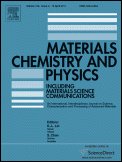
Štengl, V.;Popelkova D., Photoactivity of brookite–rutile TiO2 nanocrystalline mixtures obtained by heat, treatment of hydrothermally prepared brookite, Materials Chemistry and Physics 129 (2011) 794– 801
Abstract: Pure brookite phase was prepared by hydrothermal synthesis of titanium peroxo-complex in the presenceof glycolic acid at 220 ◦C. The structure of prepared brookite samples was determined by X-raypowder diffraction (XRD) and selected area electron diffraction (SAED). The prepared brookite was studiedby in situ high temperature XRD in air. The morphology and microstructure characteristics were alsoobtained by transmission electron microscopy (TEM). The nitrogen adsorption–desorption was used fordetermination of surface area (BET) and porosity. The method of UV–vis diffuse reflectance spectroscopywas employed to estimate band-gap energies of prepared brookite. The photocatalytic activity of theprepared titania samples were assessed by photocatalytic decomposition of Orange II dye in an aqueousslurry under UV irradiation at 365 nm wavelength. The photocatalytic activity of the prepared samplebrookite heated to 800 ◦C in air was higher than nanocrystalline unheated brookite. link
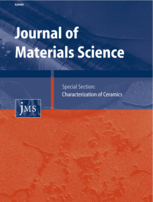
Štengl, V.; Bakardjieva, S.; Bludská, J., Se and Te-modified titania for photocatalytic applications. Journal of Materials Science 2011, 46 (10), 3523-3536
Abstract: Nanosized Se4+ and Te4+, respectively, doped titania was prepared by homogeneous hydrolysis of titanium oxo-sulfate with urea in aqueous solutions in the presence of amorphous selenium and tellurium. The prepared samples were annealing at temperature 200 and 400 °C. The structure of prepared samples was characterized by X-ray powder diffraction (XRD), selected area electron diffraction (SAED), surface area (BET), and porosity determination (BJH). The morphology and microstructure characteristics were obtained by scanning electron microscopy (SEM) and high-resolution electron microscopy (HRTEM). The method of UV/Vis diffuse reflectance spectroscopy was employed to estimate band-gap energies of the Se and Te-doped titania. The photocatalytic activity of the prepared samples was assessed by the photocatalytic decomposition of Orange II dye in an aqueous slurry during irradiation at 365 and 400 nm wavelength. The best photocatalytic activity in UV and visible area exhibit the Se and Te-doped titania samples labeled TiSe3 (~11.5 wt% Se) and TiTe3 (~8.0% Te), respectively. Link
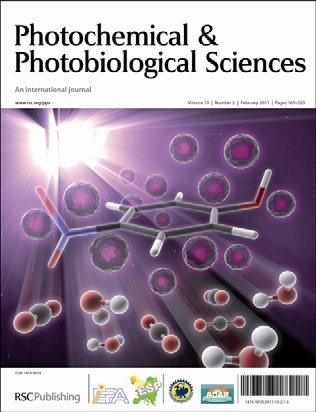 Ctibor, P.; Štengl, V.; Zahálka, F.; Murafa, N., Microstructure and performance of titanium oxide coatings sprayed by oxygen-acetylene flame. Photochemical & Photobiological Sciences 2011, 10, 403-407
Ctibor, P.; Štengl, V.; Zahálka, F.; Murafa, N., Microstructure and performance of titanium oxide coatings sprayed by oxygen-acetylene flame. Photochemical & Photobiological Sciences 2011, 10, 403-407
Abstract: TiO2 nano-powders were agglomerated by a spray drying process for application to thermal spraying. A conventional oxygen-acetylene flame torch was used to deposit porous partially nanostructured TiO2 coatings. Steel substrates were used as a support for tested samples. Scanning electron microscopy, X-ray microanalysis and X-ray diffraction were performed to study the morphology and the crystalline phases of the titania coatings. Optical band-gap and kinetics of the acetone decomposition were also studied.The best results were obtained for the powder which is available as a commercial spray feedstock. This powder seems to be most resistant against the reducing atmosphere in the jet of combustive gasses. Link
Kontakt
Ústav anorganické chemie AV ČR v.v.i.
250 68 Husinec-Řež
266 172 202
stengl@iic.cas.cz; stengl@me.com